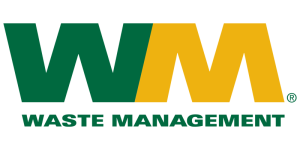Can I use schema markup for NAP in 2024?
As the digital landscape continues to evolve at a breakneck pace, businesses are constantly seeking new ways to enhance their online presence and ensure that they remain visible to their target audiences. One of the critical elements that can significantly impact local search engine optimization (SEO) is the proper implementation of schema markup for Name, Address, and Phone number (NAP) details. As we look toward 2024, the question on many marketers’ minds is: “Can I use schema markup for NAP to boost my business’s local SEO?” At JEMSU, a leader in the digital advertising realm, we understand the importance of staying ahead of the curve in search engine marketing techniques.
In the bustling world of SEO, schema markup stands out as a powerful tool that can elevate your website’s clarity for search engines, thereby enhancing your visibility in search results. JEMSU has been at the forefront of integrating cutting-edge SEO strategies for businesses of all sizes, fostering growth and improving online discoverability. As we approach 2024, the team at JEMSU is poised to guide you through the nuances of utilizing schema markup for your business’s NAP information to ensure that when potential customers are searching, your business is not just a result, but the standout choice.
Incorporating schema markup is not just about staying current; it’s about providing search engines with the detailed data they crave to index and rank your site effectively. JEMSU believes in leveraging every legitimate SEO advantage available to ensure that your business thrives in the digital ecosystem. As schema markup becomes increasingly prevalent, and as search engines become more sophisticated, the ability to accurately and efficiently communicate your business’s vital details to search algorithms is paramount. Let’s dive into the world of schema markup and discover how JEMSU can help you harness its potential for your NAP information in 2024 and beyond.
Table of Contents
1. Understanding Schema Markup and Its Importance
2. Types of Schema Markup Relevant to NAP (Name, Address, Phone Number)
3. Best Practices for Implementing Schema Markup for Local SEO
4. Updates and Changes to Schema.org Vocabulary for NAP
5. Tools and Resources for Creating and Testing Schema Markup
6. The Impact of Schema Markup on Search Engine Rankings and Visibility
7. FAQs
Instant SEO Checker + Score & Report
Enter the URL of any landing page to see how optimized it is for one keyword or phrase...
Understanding Schema Markup and Its Importance
Schema markup is a powerful code language that is added to a website to help search engines return more informative results for users. In essence, it is the vocabulary that search engines like Google, Bing, and Yahoo rely on to better understand the content on web pages. Implementing schema markup can significantly improve the way your business appears in search engines by enhancing the rich snippets that are displayed beneath the page title.
JEMSU recognizes the critical role that schema markup plays in search engine optimization (SEO). By utilizing schema, we help search engines to not just crawl, but also comprehend the specifics of a business’s NAP information, which stands for Name, Address, and Phone Number. This is particularly important for local businesses, as accurate NAP data directly influences local search engine results and can impact a business’s ability to be found by potential customers.
Consider a scenario where a user searches for services that your business offers in a specific location. If JEMSU has optimized your site with the correct schema markup for your NAP, the search engine is far more likely to display your business in a prominent position within the local search results. This can be compared to giving the search engine a well-organized index to a book – it can find the necessary information quickly and accurately, improving the user’s search experience.
According to a study by Searchmetrics, pages with schema markup rank an average of four positions higher in search results compared to pages without markup. Although correlation does not imply causation, these statistics suggest that schema markup could be associated with better search engine rankings.
However, it’s not just about rankings; schema markup also enhances the appearance of the search results. For example, a local restaurant that has added schema markup for its NAP information may have its location, hours of operation, and phone number displayed directly in the search results. This immediate visibility of crucial information can be the difference between a potential customer choosing your business over a competitor.
One analogy for the function of schema markup is that of a translator between your website and the search engine. Just as a translator helps two people who speak different languages understand each other, schema markup helps the search engine understand the content of your website. This clear communication is vital to ensure that the search engine accurately represents your business in the digital landscape.
In short, schema markup is an essential aspect of a comprehensive SEO strategy, particularly for local businesses. JEMSU leverages schema markup to ensure that clients’ NAP information is accurately and effectively communicated to search engines. This not only helps to improve visibility but also makes it easier for customers to find the information they need when they are ready to make a decision.
Google Ads Success Example
The Challenge: The Challenge: Increase new dental patients with better Google Ads campaigns.
Types of Schema Markup Relevant to NAP (Name, Address, Phone Number)
When it comes to optimizing a local business for search engines, one of the most effective tactics is the use of schema markup for NAP information. NAP, which stands for Name, Address, and Phone Number, is critical for businesses seeking local visibility. For businesses like JEMSU, utilizing the correct types of schema markup is essential to ensure that their client’s local information is accurately represented and easily understood by search engines.
One of the primary schema markup types relevant to NAP is the “LocalBusiness” schema. This type of markup allows a business to provide specific details about their local operations, which can include everything from the business name, address, and phone number to operating hours, payment accepted, and even reviews. By implementing this schema, businesses can enhance the way their information is displayed in search results, potentially leading to a higher click-through rate and increased customer trust.
Another relevant schema type is “PostalAddress,” which specifically focuses on providing a standardized format for a physical address. This is particularly useful for businesses with multiple locations, as it helps search engines differentiate between locations and present the correct address to users based on their search queries.
The “GeoCoordinates” schema is also beneficial, as it includes latitude and longitude information to help pinpoint a business’s exact location. This is especially important for mobile users who may rely on GPS data to find a business.
JEMSU understands the power of these schema types and how they can influence a local business’s online presence. For instance, consider a local restaurant that JEMSU is optimizing. By utilizing the “Restaurant” schema, which is a more specific type of “LocalBusiness” schema, the restaurant’s NAP details are paired with additional information such as menus, reservations, and cuisine type. This enriched data not only helps search engines understand the restaurant better but also provides potential customers with valuable information directly in the search results.
Regarding the impact of schema markup on local SEO, statistics show that websites using schema markup tend to rank better on search engines. According to a study by Searchmetrics, pages with schema markup rank an average of four positions higher in search results than those without. This demonstrates the tangible benefits of implementing schema markup for businesses aiming to improve their local search engine rankings.
By incorporating the correct types of schema markup, JEMSU enables businesses to communicate their NAP details more effectively to search engines, which can lead to improved local search visibility and easier discovery by potential customers. The strategic use of schema markup is akin to providing a well-drawn map in an unfamiliar city; it guides the user to the desired destination with ease and precision.
Best Practices for Implementing Schema Markup for Local SEO
When it comes to optimizing your local business for search engines, implementing schema markup correctly is essential. Schema markup helps search engines understand the content of your website better, allowing them to display more informative results to users. For local SEO, this means that search engines can present your business’s NAP (Name, Address, Phone Number) information more prominently in search results, which in turn can help your business stand out to potential customers.
At JEMSU, we emphasize the significance of structured data and how it can greatly enhance local search presence. One of the best practices for implementing schema markup is to ensure accuracy and consistency of your NAP information across all online platforms. This is crucial because search engines like Google value the reliability of information when ranking websites. If your business’s NAP varies across the web, it can confuse both search engines and potential customers, ultimately harming your local SEO efforts.
Another key practice is to use the most specific LocalBusiness type you can from the Schema.org vocabulary. For example, if you run a dental clinic, you would choose ‘Dentist’ rather than the more generic ‘LocalBusiness’. This specificity helps search engines understand exactly what type of business you are, which can improve your relevance in search queries.
Using JEMSU as an example, imagine if we were to implement schema markup for a local business client. We would not only apply the aforementioned practices but also ensure that the schema is integrated properly within the website’s code. This might involve embedding the schema in the HTML using the JSON-LD format, which is recommended by Google for its ease of implementation and maintenance.
Furthermore, it’s important to keep schema markup updated. As the business grows and evolves, so should its online presence. This could mean updating the schema when there is a change in location, operating hours, or services offered. Staying current ensures that search engines and users have the most up-to-date information, which can help maintain and improve local search rankings.
To illustrate the impact of schema markup, consider a statistic from a case study that showed businesses that implemented structured data saw a 30% increase in click-through rates. This is a significant boost, highlighting the tangible benefits of using schema markup correctly.
In sum, while schema markup may seem like a small piece of the SEO puzzle, its correct implementation can have a profound impact on a business’s online visibility. For local businesses, in particular, JEMSU acknowledges that taking the time to apply these best practices can make the difference between blending in and standing out in the crowded digital marketplace.
SEO Success Story
The Challenge: The Challenge: Design an SEO friendly website for a new pediatric dentist office. Increase new patient acquisitions via organic traffic and paid search traffic. Build customer & brand validation acquiring & marketing 5 star reviews.
Updates and Changes to Schema.org Vocabulary for NAP
In the ever-evolving world of SEO and digital marketing, staying abreast of the latest updates and changes to schema.org vocabulary is crucial, particularly when it comes to NAP (Name, Address, Phone Number) information. As a leading digital advertising agency, JEMSU understands the significance of these updates for businesses looking to enhance their local SEO.
Schema markup, a form of structured data, helps search engines understand the content of a webpage, and by doing so, can significantly affect how a business’s information is displayed in search results. For instance, when schema markup is correctly applied to NAP details, it can lead to the creation of rich snippets, which are enhanced search results that can improve click-through rates.
The schema.org vocabulary is continuously updated to reflect the best ways to describe and tag different kinds of information on the web. Changes to the vocabulary for NAP can include new properties to describe a business’s contact information more accurately, updates to existing definitions, or even entirely new types of schema that can benefit local businesses. For example, modifications might be made to accommodate new social media platforms as valid points of contact, or to better represent businesses that operate in a purely virtual space without a physical address.
JEMSU stays on the forefront of these developments, ensuring that our clients’ websites are not only compliant with the latest standards but also optimized to take full advantage of the rich results that proper schema markup can yield. Consider a scenario where Google decides to prioritize a new schema property for virtual business addresses; JEMSU would swiftly implement this change for its clients, ensuring they maintain a competitive edge.
Furthermore, JEMSU leverages the power of statistics to demonstrate the effectiveness of schema markup. Studies have shown that websites using schema markup rank four positions higher in search results on average compared to those that don’t. This statistic underscores the value of keeping up-to-date with the latest schema.org changes, as they can directly influence a business’s visibility online.
In conclusion, by closely monitoring the updates and changes to schema.org vocabulary for NAP, JEMSU ensures that businesses are not only found more easily on search engines but are also presented in the best possible light. Whether through rich snippets, improved local search rankings, or enhanced online presence, the proper use of schema markup remains a key strategy in JEMSU’s arsenal to drive digital success for its clients.
Jemsu has been a great asset for us. The results have grown at strong positive linear rate. They have been extremely accessible, flexible, and very open about everything. Natalya is a star example of how to work with your accounts to drive them forward and adjusts to their quirks. Jaime is able to clearly communicate all of the work that is being done behind the scenes and make sure that all of my team is understanding.
I couldn’t be more pleased with my JEMSU Marketing Team!
Julia, Tamara, Joelle and Dally have exceeded my expectations in professionalism, creativity, organization, and turn around time with my Social Media Management project.
I have thoroughly enjoyed sharing my journey with this team of empowered women!
Thank you JEMSU! Your team designed and launched my new website, and developed strategies to drive traffic to my site, which has increased my sales. I highly recommend your Website & SEO Agency!
Jemsu has always been professional and wonderful to work with on both the SEO and website design side. They are responsive and take the time to explain to us the complicated world of SEO.
Jemsu is an excellent company to work with. Our new website blows away our competition! Unique, smooth, and flawless. Definite wow factor!
The folks at JEMSU were excellent in designing and launching our new website. The process was well laid out and executed. I could not be happier with the end product and would highly recommend them to anyone.
Jemsu is a great company to work with. Two prong approach with a new site and SEO. They totally redesigned my website to be more market specific, responsive, and mobile friendly. SEO strategy is broad based and starting to kick in. My marketing will also be adding Facebook and Google ads in the coming weeks. Thanks for your all you hard work.
JEMSU has wworked with our team to create a successful campaign including incorporating an overall rebranding of our multiple solutions. The JEMSU team is embracing of our vision and responds timely with life of our ideas.
JEMSU is great company to work with. They listen & really work hard to produce results. Johnathan & Sasha were such a big help. If you have a question or concern they are always there for you.
I would definitely recommend them to anyone looking to grow their company through adwords campaigns.
Jemsu have exceeded our expectations across all of our digital marketing requirements, and I would recommend their services to anyone who needs expertise in the digital marketing space.
JEMSU was able to quickly migrate my site to a new host and fix all my indexation issue. I look forward to growing my services with JEMSU as I gain traffic. It’s a real pleasure working with Julian and Juan, they’re both very professional, courteous and helpful.
JEMSU is incredible. The entire team Is professional, they don’t miss a deadlines and produce stellar work. I highly recommend Chris, Rianne, and their entire team.
We’ve been working with JEMSU for about five months and couldn’t be happier with the outcome. Our traffic is up and our leads are increasing in quality and quantity by the month. My only regret is not finding them sooner! They’re worth every penny!
Tools and Resources for Creating and Testing Schema Markup
When it comes to optimizing your business’s online presence, especially for local search, schema markup is an essential component. As of 2024, utilizing schema for your NAP details can significantly influence how search engines understand and display your business information. At JEMSU, we consistently harness a variety of tools and resources to create and test schema markup, ensuring that it is both correctly implemented and effective.
One of the most valuable tools in our arsenal is Google’s Structured Data Testing Tool. This resource allows us to validate the schema markup we design for your business’s website. By simply entering a URL or copying and pasting code, we can immediately identify any errors or warnings that could impact how your NAP is interpreted by search engines. Think of it as a grammar check for your website’s code – it’s a crucial step in guaranteeing that the structured data speaks the search engine’s language fluently.
Another indispensable resource is Schema.org itself. It’s akin to an extensive dictionary where every possible type of structured data markup is defined and explained. This comprehensive guide enables our team at JEMSU to stay up-to-date with the latest types of schema and ensure that we are using the most current and appropriate markup for your business. By leveraging the examples provided on Schema.org, we can craft tailored schema that fits the unique aspects of your company, much like a tailor fitting a bespoke suit that perfectly matches one’s measurements.
Additionally, we often utilize the Google My Business platform, which, although not a direct tool for creating schema, plays a complementary role in managing your NAP information. Ensuring consistency across your Google My Business profile and your website’s schema markup is like ensuring your dance steps are in sync with the music; both need to move together harmoniously for optimal performance.
Statistics often underscore the value of well-implemented schema markup. Studies have shown that websites using schema markup tend to rank four positions higher in search results on average compared to those that don’t. In the competitive digital landscape, this can be the difference between being in the spotlight or being part of the chorus line.
JEMSU’s expertise extends beyond just the use of these tools. Our team understands the nuances of schema markup and how to integrate it seamlessly with your overall digital marketing strategy. By aligning your NAP information with the correct schema markup, we help search engines like Google present your business more prominently and accurately, which in turn can lead to increased visibility, higher click-through rates, and ultimately, more customers walking through your door.
SEO Success Story
The Challenge: Increase dent repair and body damage bookings via better organic visibility and traffic.
The Impact of Schema Markup on Search Engine Rankings and Visibility
Schema markup is a powerful tool in the arsenal of search engine optimization (SEO) strategies, and its impact on search engine rankings and visibility cannot be overstated. When utilized effectively, schema markup helps search engines understand the context of your content, allowing for more informative and rich results. At JEMSU, we recognize the value of integrating schema markup into a website’s SEO strategy to enhance online presence.
Imagine walking into a library where books are randomly placed on shelves with no labels or organization. Finding the book you need would be incredibly challenging. Schema markup acts like a librarian for your website, categorizing and labeling your content so that search engines can easily index and display it in relevant search queries. This organizational analogy demonstrates the fundamental role of schema markup in making your website’s content more discoverable.
One of the most compelling reasons to use schema markup is its potential to improve click-through rates (CTRs). According to a study conducted by Searchmetrics, web pages with schema markup rank, on average, four positions higher in search engine results pages (SERPs) than those without it. By providing search engines with metadata about your business’s NAP information, JEMSU helps to ensure that clients’ local business listings are more attractive and informative in SERPs, which can lead to increased organic traffic.
An example of the effectiveness of schema markup can be seen in the use of rich snippets. When JEMSU implements schema markup for a client’s NAP information, it allows for the possibility of rich snippets—enhanced search results that can include elements like star ratings, images, and additional business details. These rich snippets can make a business’s search result stand out from the competition, making it more likely that a user will notice and click on their listing.
The use of schema markup also speaks to the growing importance of voice search. With the rise of digital assistants like Siri, Alexa, and Google Assistant, having your NAP information clearly defined and structured is crucial. JEMSU ensures that clients’ business information is optimized for these voice search queries, which often focus on local search and require precise NAP data to deliver the correct results.
In summary, the impact of schema markup on search engine rankings and visibility is significant. It provides clear and structured data to search engines, enhances local SEO efforts, and can lead to higher CTRs and better overall online visibility. JEMSU leverages the power of schema markup to help businesses achieve a competitive edge in their digital marketing efforts.
FAQS – Can I use schema markup for NAP in 2024?
1. **What is schema markup for NAP?**
Schema markup for Name, Address, and Phone number (NAP) is a code that you put on your website to help search engines return more informative results for users. It enhances local SEO by making it easier for search engines to understand and display your contact information.
2. **Can I still use schema markup for NAP in 2024?**
Yes, as of the current knowledge, you can use schema markup for NAP in 2024. Schema.org, which is the centralized home for schema markup, is widely supported and continuously updated, and there’s no indication that this will change by 2024.
3. **Is schema markup for NAP going to change in the future?**
Schema markup evolves as the internet changes. While the core concept of NAP markup should remain stable, updates and new properties may be introduced. It’s essential to stay updated with the latest schema.org documentation and SEO best practices.
4. **How does schema markup improve my local SEO?**
Schema markup helps search engines understand specific details about your business, such as your name, address, and phone number. This clarity can improve your visibility in local search results and can also lead to rich results that stand out to users.
5. **Does adding schema markup to my site guarantee better SEO rankings?**
While schema markup can improve the way your site is represented in search results, it is not a guaranteed way to improve rankings. SEO depends on a variety of factors, including content quality, user experience, and backlinks.
6. **Where do I add schema markup for NAP on my website?**
Schema markup for NAP is typically added within the HTML code of the contact page or the footer of your website where your NAP information is listed. It can be integrated directly into the HTML or through JavaScript, depending on your website setup.
7. **Can I use schema markup for NAP on any type of website?**
Yes, schema markup for NAP can be added to any website, regardless of the platform it’s built on. Whether you have a custom-coded website, a WordPress site, or use another content management system, you can implement schema markup.
8. **How do I create schema markup for NAP?**
You can create schema markup for NAP by using the schema.org vocabulary and formats like JSON-LD, Microdata, or RDFa. There are also online tools and plugins that can generate the necessary code for you, which you can then add to your website.
9. **What if I change my business’s NAP information?**
If your NAP information changes, you should update your schema markup accordingly. Keeping your schema markup accurate is crucial for maintaining the integrity of your local SEO.
10. **Can I add schema markup for NAP myself, or do I need a developer?**
If you have some knowledge of HTML and your website’s structure, you may be able to add schema markup for NAP yourself, especially with the aid of online generators. However, if you’re not comfortable with coding, it’s best to seek help from a web developer or a digital marketing agency like JEMSU.
SEO Success Story
The Challenge: Increase new dental patients with better organic visibility and traffic.















